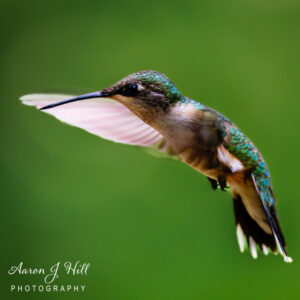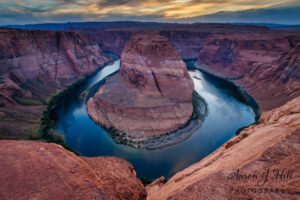Introduction
The Badlands National Park, located in southwestern South Dakota, is a treasure trove of rugged beauty and dramatic landscapes. Its name might evoke images of harsh and forbidding terrain, but it is a place of sublime beauty, especially when seen through the lens of a camera during the magical golden hour. This blog post delves into the experience of photographing the Badlands at this time, highlighting the unique challenges and rewards it offers.
The Allure of Golden Hour
Golden hour, the period shortly after sunrise or before sunset, is a revered time among photographers. The light during this time is soft, warm, and diffused, casting a golden hue over the landscape. Shadows are long and textures are enhanced, giving depth and dimension to the scene. In a place as visually striking as the Badlands, golden hour transforms an already stunning landscape into something truly extraordinary.
Preparing for the Shoot
Photographing the Badlands during golden hour requires careful planning. The park covers nearly 244,000 acres, with vast expanses of eroded buttes, pinnacles, and spires. To make the most of the light, it’s essential to scout locations in advance. The day before the shoot, I spent several hours exploring different vantage points, noting how the light interacted with the terrain at various times.
I settled on a spot with a clear view of the layered rock formations, where the interplay of light and shadow would be most dramatic. Armed with my Canon EOS R & R5 camera’s, a selection of lenses, a sturdy tripod, and plenty of water, I set out well before sunrise to capture the first light of day.
The Magic of Morning Light
As the sun began to rise, the Badlands came alive with color. The sky transitioned from deep blue to vibrant hues of pink and orange, casting a warm glow over the landscape. The rock formations, with their distinct layers of sediment, took on a golden tone, highlighting their intricate patterns and textures.
I experimented with different compositions, using a wide-angle lens to capture the vastness of the landscape and a telephoto lens to zoom in on interesting details. The early morning light revealed subtle nuances in the rock formations that are often lost during the harsh midday sun.
One of my favorite shots from the morning session features a series of spires backlit by the rising sun. The long shadows created a sense of depth and mystery, drawing the viewer’s eye into the frame. I used a small aperture to ensure that both the foreground and background were in sharp focus, and a slow shutter speed to capture the subtle movements of the grasses swaying in the breeze.
Sunset Splendor
The evening golden hour presented a different set of challenges and opportunities. As the sun began its descent, the landscape was bathed in a rich, warm light that intensified the colors of the rocks and the sky. The shadows grew longer, creating striking contrasts and emphasizing the ruggedness of the terrain.
For the evening shoot, I chose a location with a view of the distant prairie, where the rolling hills provided a gentle counterpoint to the jagged peaks of the Badlands. As the sun dipped below the horizon, the sky erupted in a blaze of color, with deep reds and purples contrasting with the golden tones of the rocks.
One of the most memorable shots from this session features a solitary bison silhouetted against the fiery sky. The bison, a symbol of the Great Plains, added a sense of scale and majesty to the scene. To capture this image, I used a medium telephoto lens and a fast shutter speed to freeze the motion of the bison as it moved across the landscape.
Technical Considerations
Photographing the Badlands during golden hour requires a solid understanding of camera settings and techniques. Here are a few tips that can help you make the most of this magical time:
1. Use a Tripod: The low light conditions during golden hour often require slower shutter speeds, making a tripod essential for keeping your images sharp.
2. Shoot in RAW: RAW files contain more data than JPEGs, allowing for greater flexibility in post-processing. This is particularly important when dealing with the subtle gradations of color and light during golden hour.
3. Bracket Your Exposures: The dynamic range during golden hour can be challenging to capture in a single exposure. Bracketing allows you to take multiple shots at different exposures, which can be blended later to create a well-balanced image.
4. Pay Attention to Composition: Golden hour light can transform even a simple scene into something spectacular. Experiment with different compositions to find the most compelling way to capture the landscape.
5. Use Manual Settings: Automatic settings can struggle with the changing light conditions during golden hour. Switching to manual mode gives you full control over your camera’s settings, allowing you to adjust for the best exposure.
Post-Processing
Post-processing is an integral part of digital photography, and it can help enhance the beauty of golden hour images. For my Badlands photographs, I used Adobe Lightroom to adjust the exposure, contrast, and color balance. The goal was to preserve the natural look of the scene while enhancing the qualities that make golden hour so special.
Conclusion
Photographing the Badlands National Park during golden hour is an unforgettable experience. The park’s dramatic landscapes and the magical quality of the light create endless opportunities for stunning images. Whether you’re a seasoned photographer or a passionate amateur, the Badlands at golden hour offers a chance to capture the beauty of nature in its most enchanting form.
So, pack your camera gear, plan your shoot, and prepare to be amazed by the golden hour’s transformative power in one of America’s most unique and breathtaking national parks.




Pingback: TA Moulton Barn on a Golden Morning
Pingback: Equine Photography: Create Stunning Horse Portraits